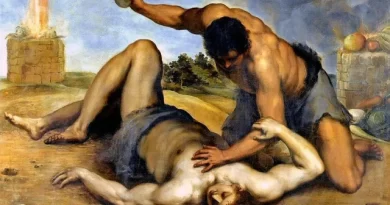The story of the construction of the tabernacle – तम्बू के निर्माण की कहानी
The story of the construction of the Tabernacle, a portable sanctuary for the Israelites during their journey through the wilderness, is found primarily in the Book of Exodus, chapters 35 to 40.
God provided detailed instructions for the construction of the Tabernacle to Moses on Mount Sinai. These instructions included specific designs for the structure, its furnishings, and the materials to be used (Exodus 25-31).
Moses relayed God’s instructions to the Israelites and called for contributions of materials needed for the Tabernacle. The people responded generously, bringing gold, silver, bronze, fine linen, goat hair, ram skins, acacia wood, olive oil, spices, and precious stones (Exodus 35:4-9, 20-29).
God chose Bezalel and Oholiab as the chief craftsmen to lead the construction of the Tabernacle. Bezalel, from the tribe of Judah, was filled with the Spirit of God, giving him wisdom, understanding, and skill in all kinds of craftsmanship. Oholiab, from the tribe of Dan, was appointed as his assistant. Along with them, other skilled workers were also called to assist in the construction (Exodus 35:30-35, 36:1-2).
The Tabernacle itself was a tent-like structure made of frames of acacia wood overlaid with gold, with silver bases. It had a covering of fine linen curtains with cherubim designs, and additional coverings of goat hair, ram skins dyed red, and another durable leather (Exodus 36:8-19).
The Ark, a wooden chest overlaid with gold, was designed to hold the tablets of the Covenant (the Ten Commandments). It featured a gold cover, known as the mercy seat, with two cherubim facing each other on top (Exodus 37:1-9).
This table was made of acacia wood overlaid with gold, with dishes, pans, bowls, and pitchers, all made of pure gold (Exodus 37:10-16).
The lampstand, or menorah, was made of pure gold, featuring six branches extending from a central shaft, with almond blossom designs (Exodus 37:17-24).
This small altar was made of acacia wood overlaid with gold, used for burning incense (Exodus 37:25-29).
This larger altar was made of acacia wood overlaid with bronze, used for animal sacrifices (Exodus 38:1-7).
The bronze basin was placed between the Tent of Meeting and the altar, used by the priests for ceremonial washing (Exodus 38:8).
The Tabernacle was enclosed by a courtyard made with linen curtains and posts with bronze bases and silver hooks (Exodus 38:9-20).
The skilled workers, under the leadership of Bezalel and Oholiab, completed the Tabernacle according to all the instructions given by God. The people continued to bring offerings until Moses had to tell them to stop because there was more than enough material (Exodus 36:3-7).
When the work was finished, the Tabernacle and all its furnishings were brought to Moses, who inspected the work and saw that it had been done just as the Lord commanded. Then Moses blessed them (Exodus 39:32-43).
Moses set up the Tabernacle on the first day of the first month of the second year. He placed the Ark of the Covenant inside and hung the shielding curtain to screen it off. He then arranged the other furnishings in their proper places, anointed the Tabernacle and everything in it to consecrate them, and installed Aaron and his sons as priests (Exodus 40:1-33).
Once everything was in place, the cloud covered the Tent of Meeting, and the glory of the Lord filled the Tabernacle. Moses could not enter the Tent of Meeting because the cloud had settled on it, and the glory of the Lord filled the Tabernacle. The cloud was a sign of God’s presence with the Israelites throughout their journeys (Exodus 40:34-38).
The Israelites followed God’s instructions precisely, demonstrating their obedience and dedication. The construction was a community effort, with everyone contributing materials and skills. The Tabernacle was a tangible sign of God’s presence among His people, providing a place for worship and sacrifices. Many aspects of the Tabernacle and its functions foreshadow the work of Jesus Christ, who provides a way for people to be in the presence of God.
The story of the Tabernacle’s construction is a powerful example of faith, obedience, and the importance of a community coming together to fulfill God’s purposes.
The story of the construction of the tabernacle – तम्बू के निर्माण की कहानी



